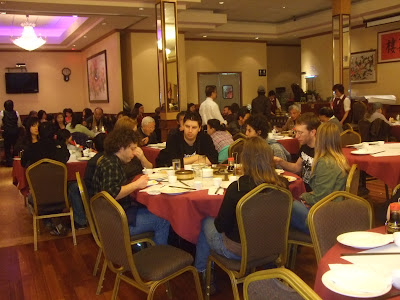BOS-SFO-NYC Comparison
This can be filed under yet-another-infrastructure/geography-dorkery post. I have a great deal of affection for New York City (the ur-city, and the archetypal city of my youth), Boston (the town I live in now, where I became the person I am, and have a--yow--twenty year history with), and San Francisco (the location of about a third of my holiday card list... the place that I escape to periodically). They are also the three cities that I keep mass transit cards for in my organizer (MTA, MBTA, BART).
But during this past visit, I thought, "Huh... I should do a size/scale comparison of those three cities." I know that Boston is small, but I wanted a visual reference of just how small. So here are the three cities, at about the same scale, plus populations from Wikipedia:

New York (5 boroughs): 8,274,527
Manhattan: 1,620,867
Bronx: 1,373,659
Brooklyn: 2,528,050
Queens: 2,270,338
Staten Island: 481,613

San Francisco: 799,183
Oakland: 401,489

Boston: 608,352
Cambridge: 101,388
Huh... is it a sign of my mental health that I look at these maps, and the words going through my head are, "Map shows effect of 100 kT air burst over city center...."? Actually, wait, the web is even stranger than that--Google Map mashup with nuclear weapon overpressure zones: HYDESim maps overpressure radii generated by a ground-level detonation; these radii are an indicator of structural damage to buildings. No other effects, such as thermal damage or fallout levels, are included in this tool. Note that the displayed rings are "idealized"; that is, no account is taken of terrain, urban density, ground type, weather conditions, and so on.
Anyway, here are all three places in outline for comparison:

Some interesting points to note.
- Manhattan is about 13 miles from tip to tip--which is about the same distance as downtown Boston to Salem, MA. And remember, Manhattan is the physically smallest of the five boroughs (although the third most populated).
- Basically, downtown Boston is about the same size as one of the "neighborhoods" of New York City
- Manhattan's Central Park is also shown for scale--1.32 square miles.
- San Francisco is also pretty darn large (the peninsula)--but the part that is really dense (a la Manhattan) is only a small fraction of the city.
- Boston to Arlington is about 6.5 miles--about from the Upper West Side to the Battery, or across the width of SF.























